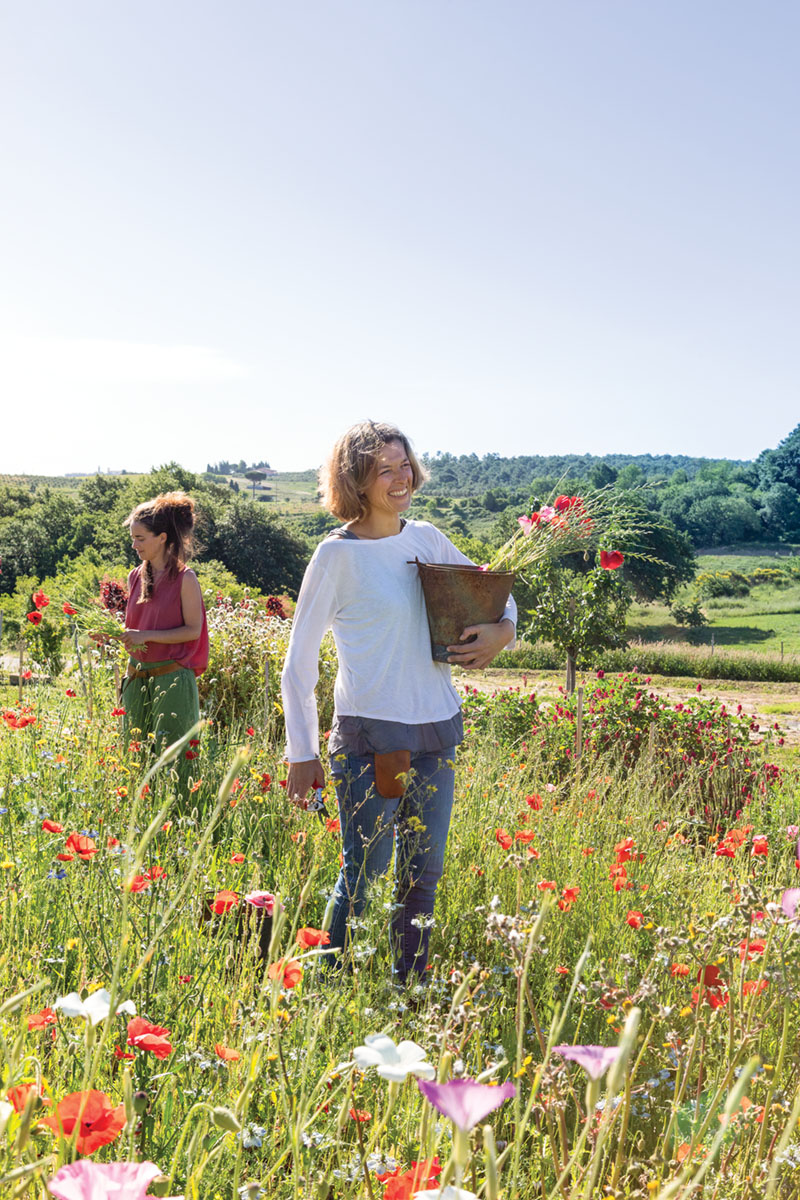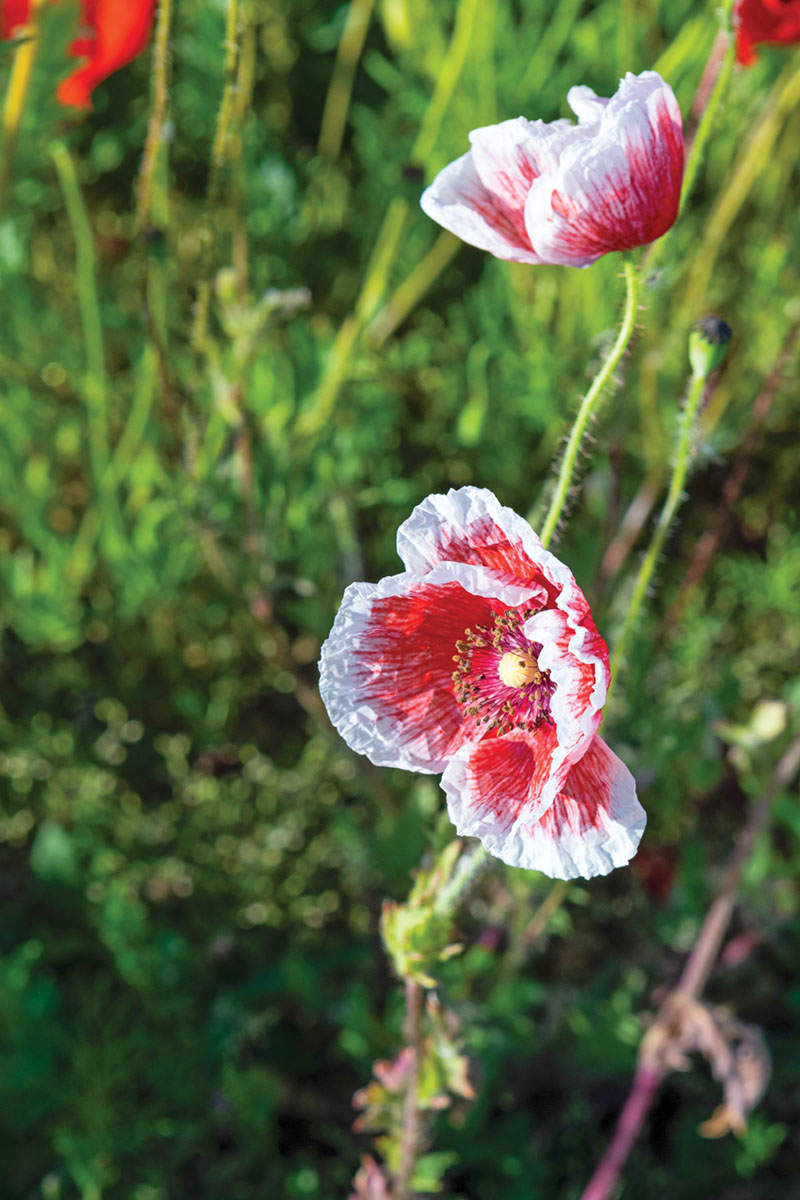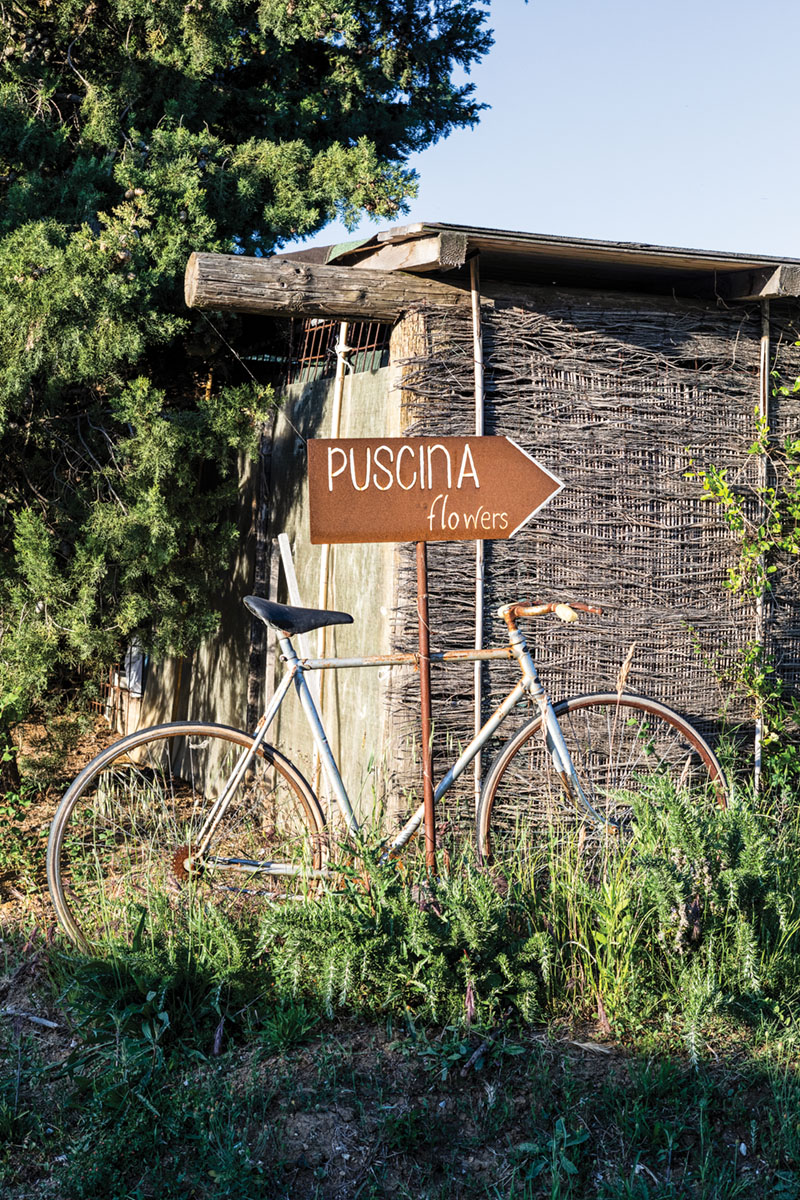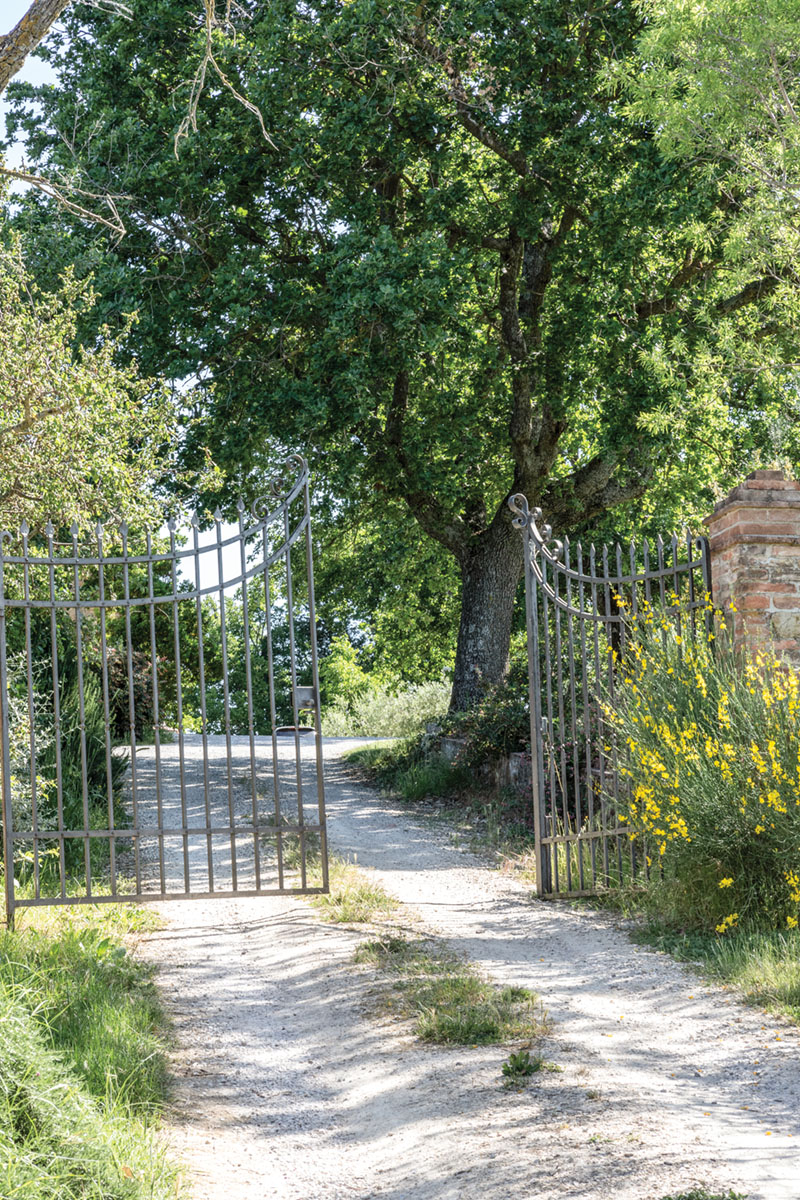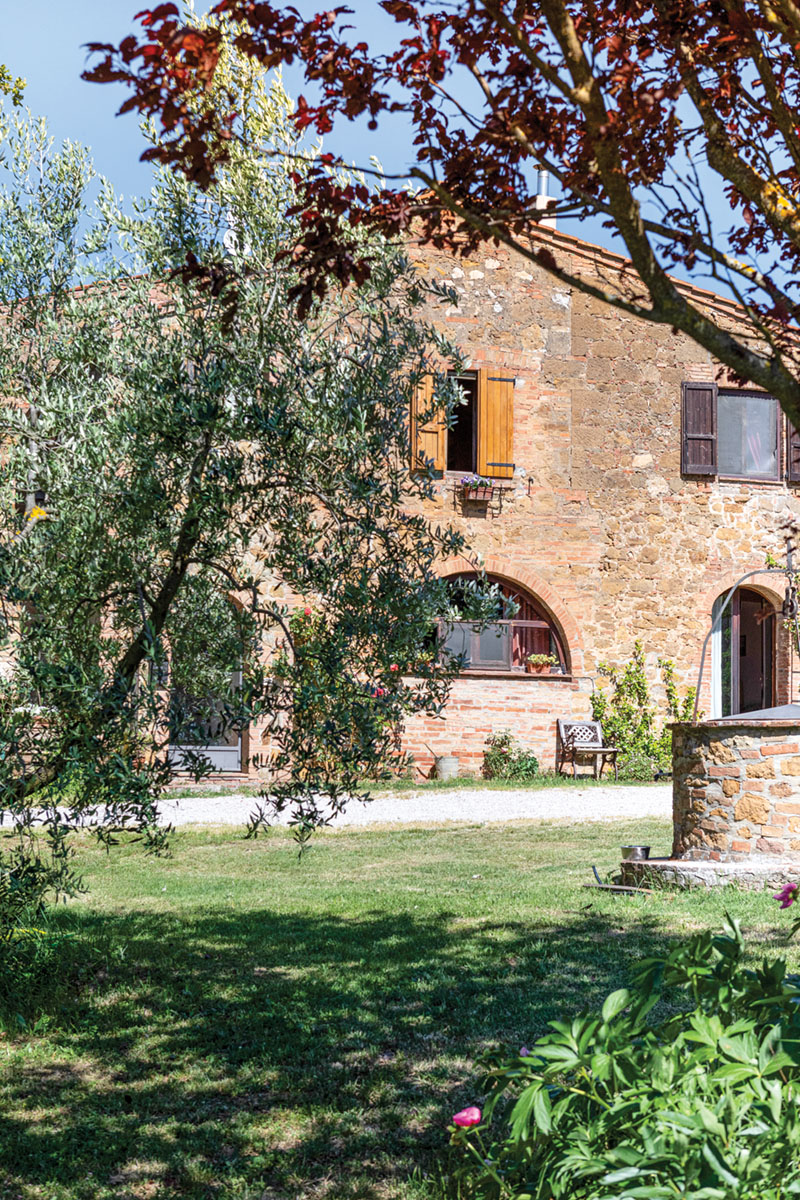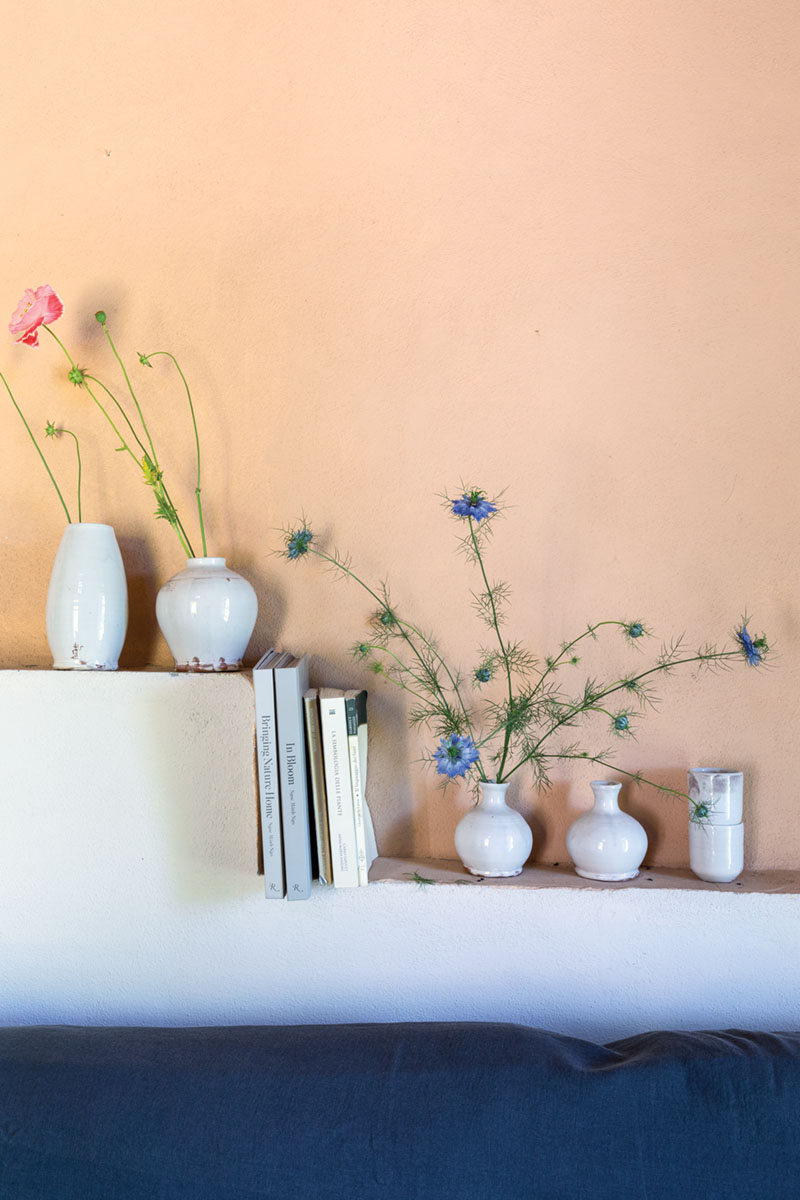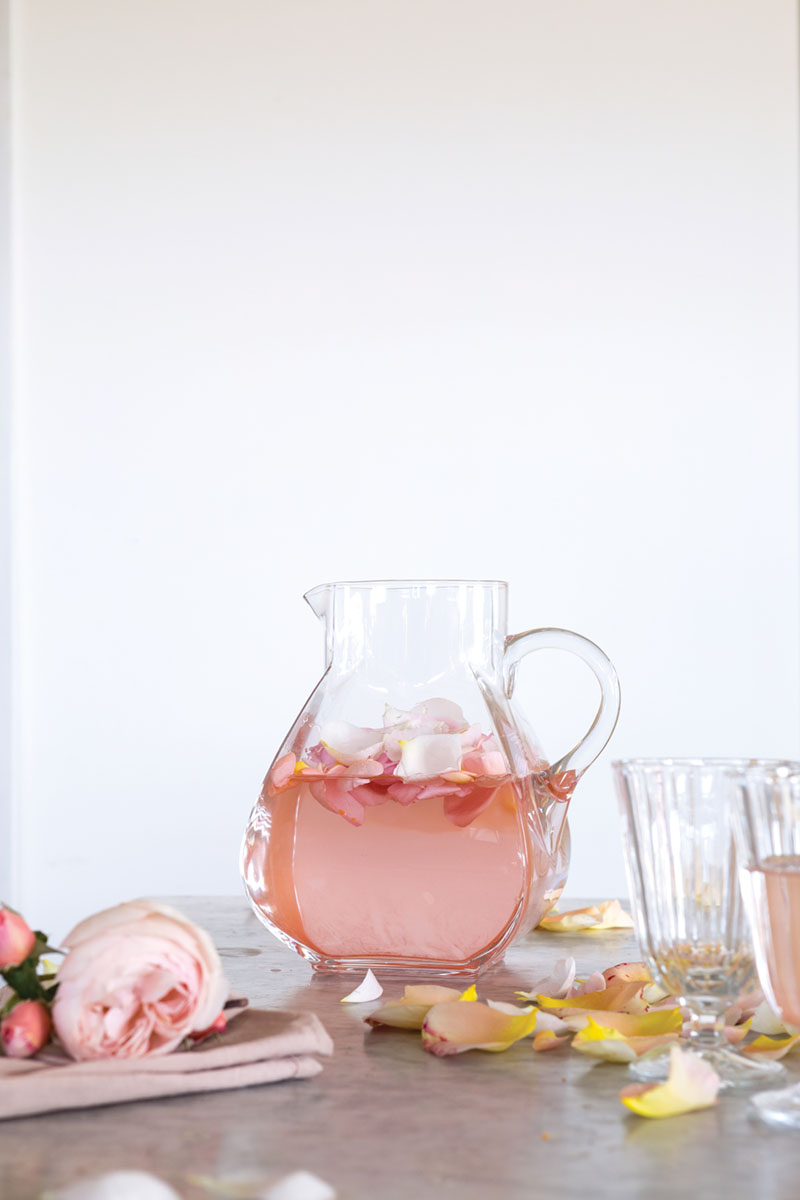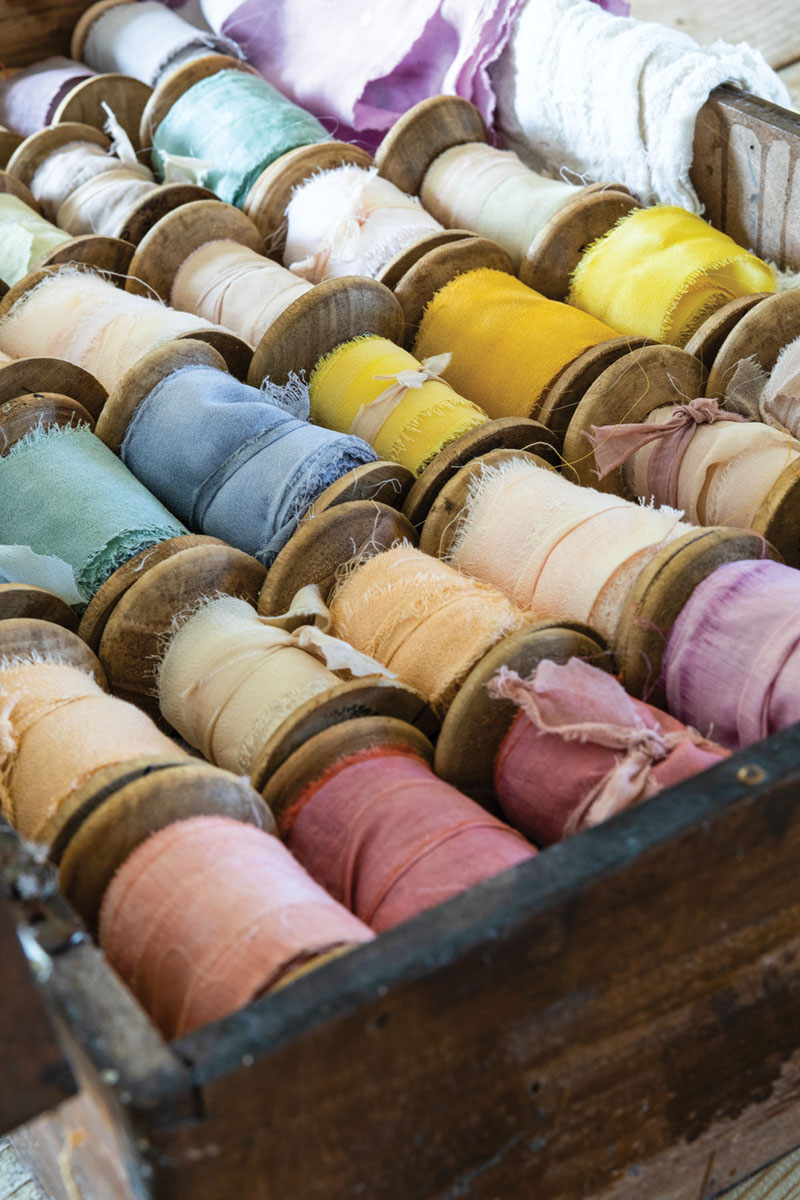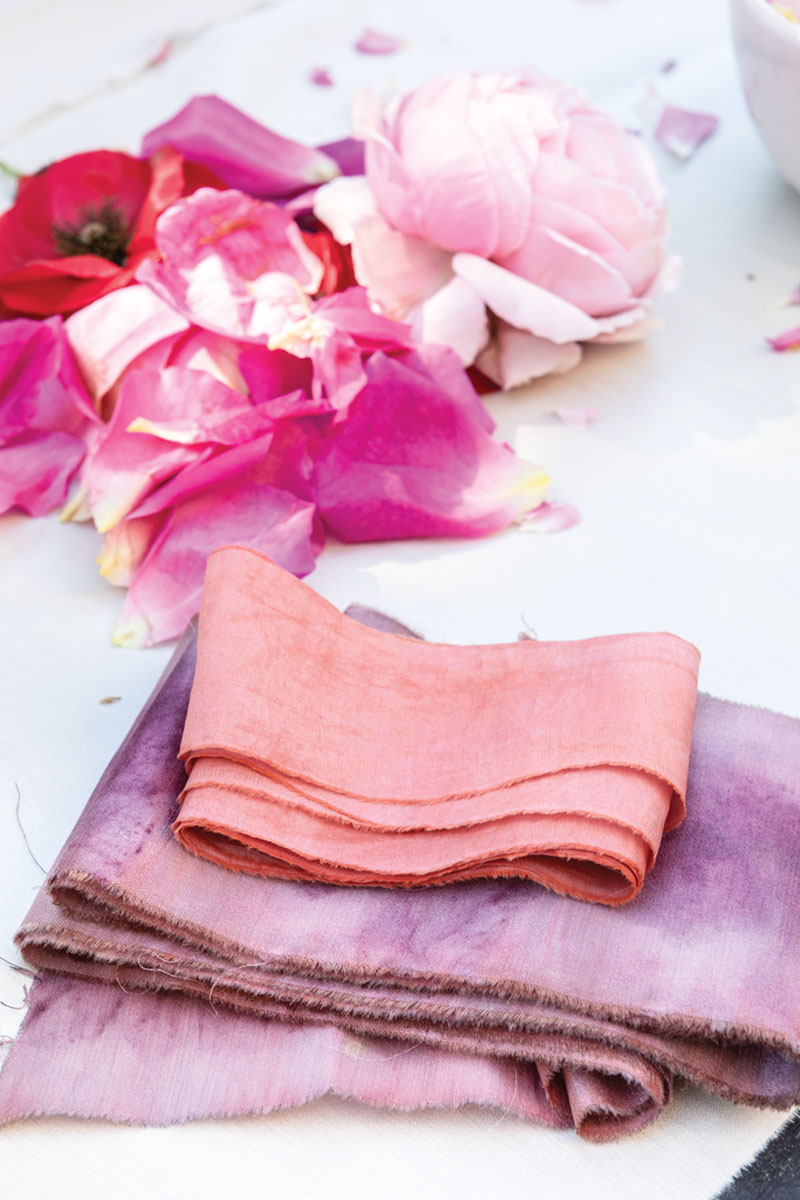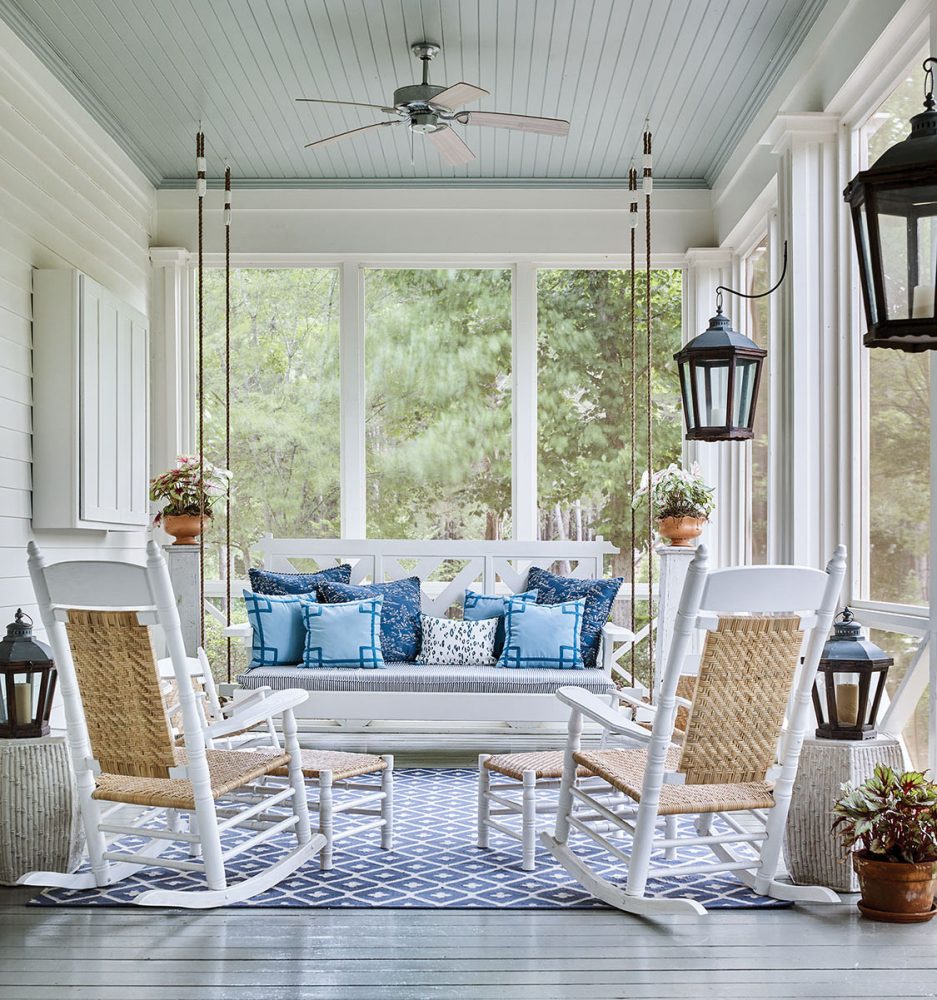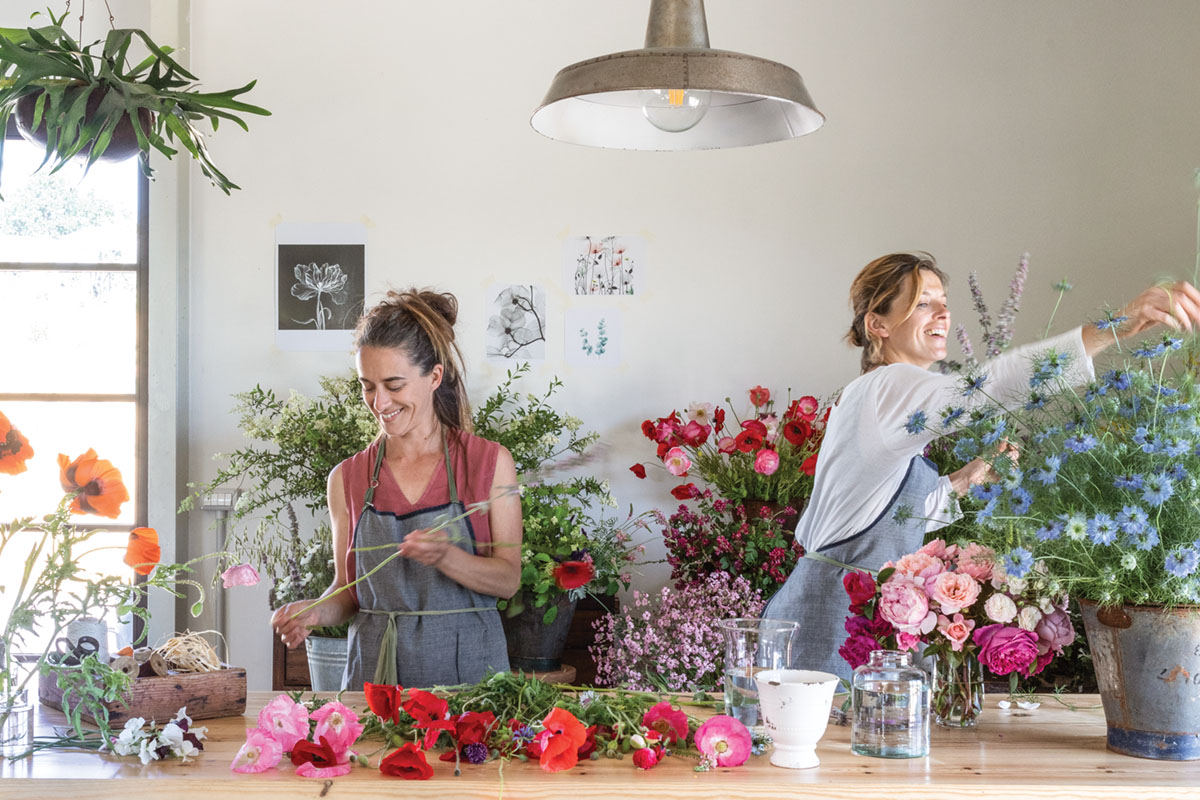
Photo by Monica Spezia | Living Inside
Laura and Teresa in their workshop among poppies (Oriental varieties and Papaver rhoeas), English roses, and Nigella damascena
In the Tuscan countryside, scattered in a postcard landscape between Val d’Orcia and Val di Chiana, sits the town of Pienza, with its softly rounded hills and rows of cypresses and only a few houses scattered here and there. This is where sisters Teresa and Laura Cugusi grew up in the farmhouse of their grandfather, who arrived in Tuscany from Sardinia between the 1960s and ’70s. All around it are 50 hectares (123 acres) of farmland; olive trees; woods; and, today, thanks to the two sisters, a lush flower garden or, rather, a flower farm with a floral design workshop.
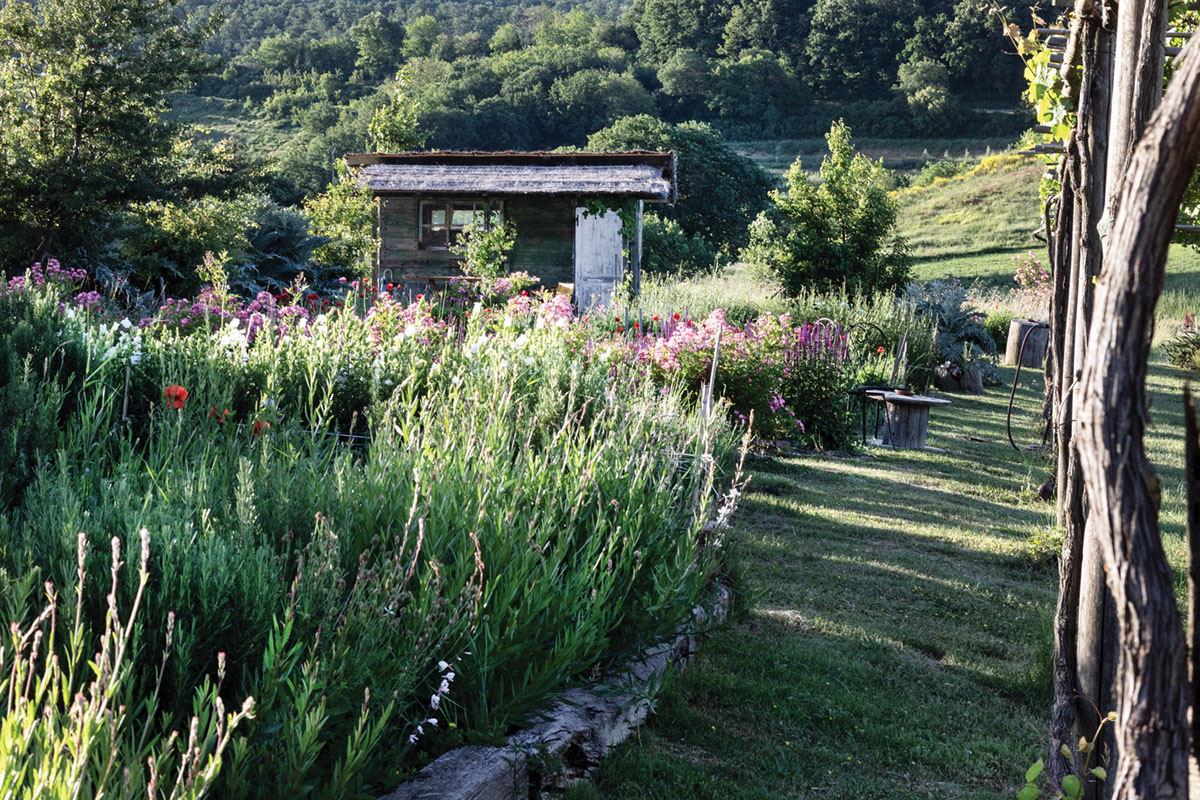
Photo by Monica Spezia | Living Inside
The old wooden shed in the garden is now used as a storage room for garden tools.
“After studying and working in a wide range of fields in various parts of Italy, we decided to go back home, where our roots are, and start a project bound to tradition and to our land, but innovative as well,” they say. “We wanted to invest here where we were born.” The pastureland, unused for a long time by their veterinarian father, has become a colorful reserve of flowers—a sort of open-air laboratory. And Puscina Flowers, named for the ancient farm, is now the sisters’ family farm.
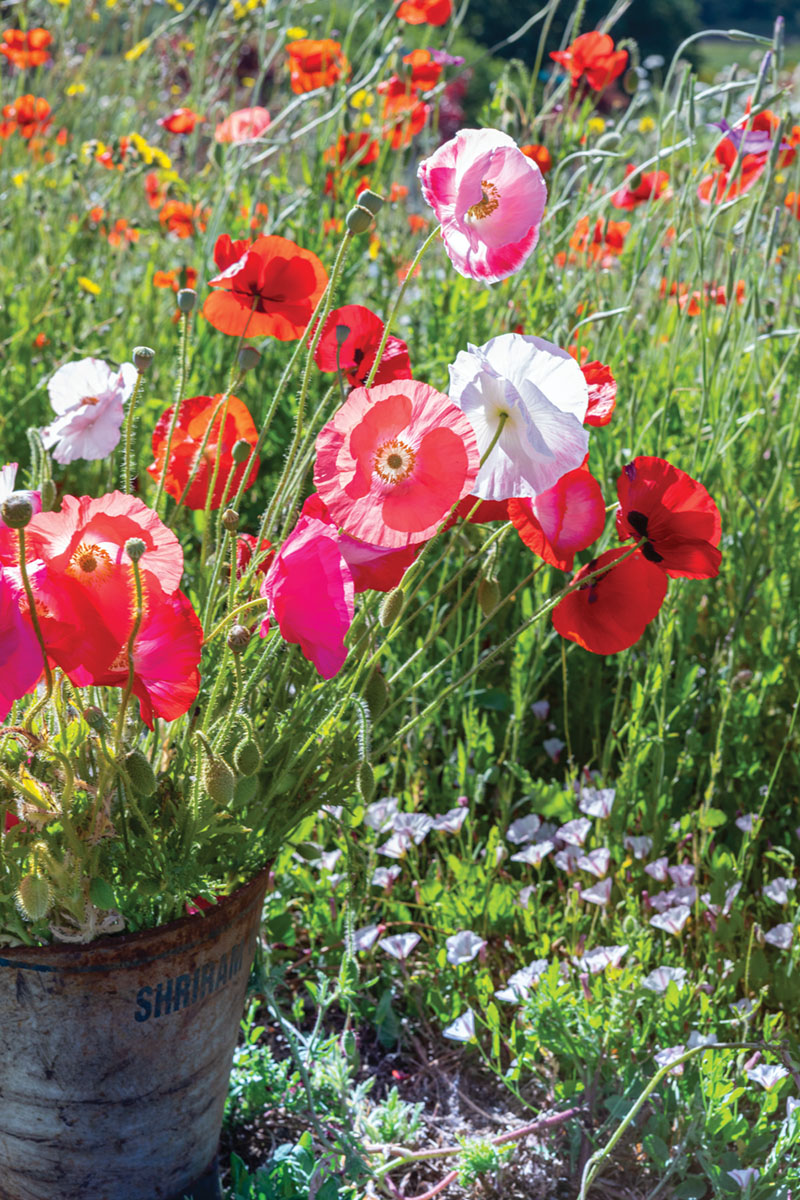
Photo by Monica Spezia | Living Inside
A field of colorful poppies
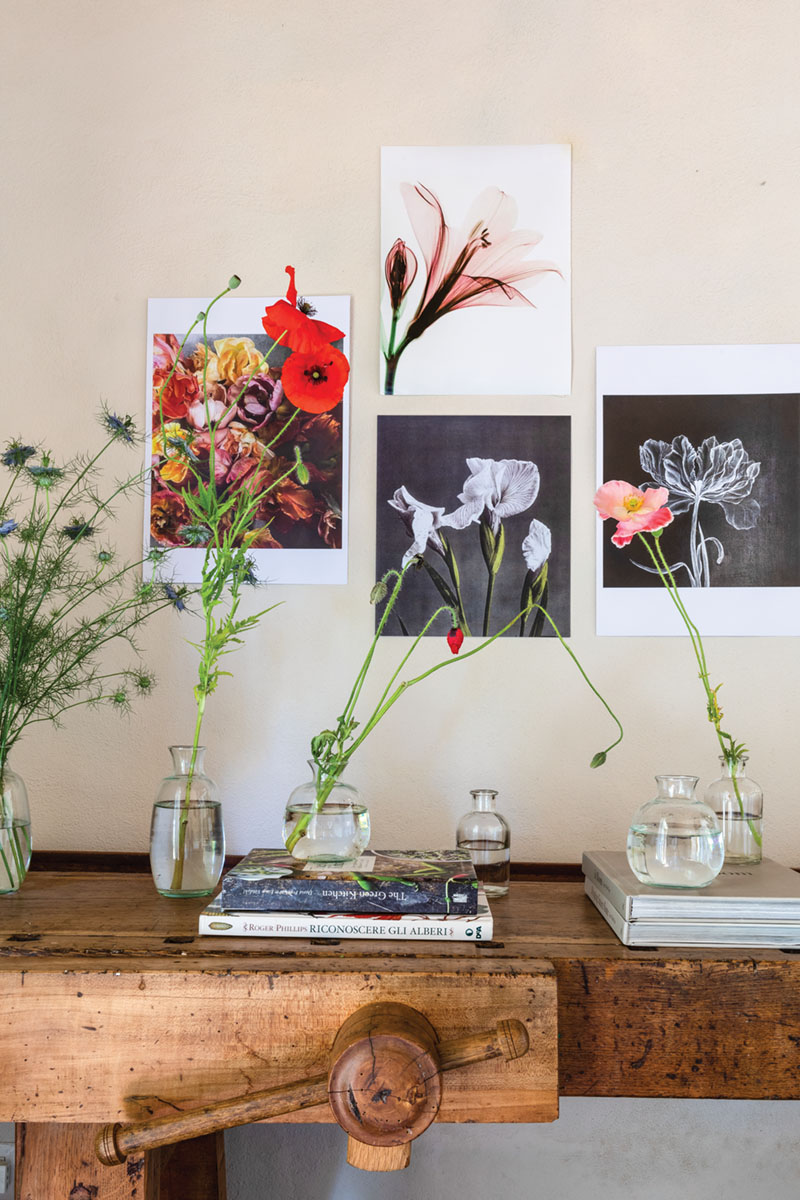
Photo by Monica Spezia | Living Inside
An old carpenter’s table holds small floral bouquets in glass vases.
“We began about six years ago picking the seeds of plants in the area—wild cornflowers and poppies, ornamental cosmos and zinnias, grasses, and spontaneous varieties from the garden that we used to compose our first bouquets,” say the pair, who then moved on to the actual cultivation, drawing on both ancient seeds and new rhizomes, tradition and research. “Today we passionately cultivate over 200 species and 400 varieties of cut flowers and foliage.”
The result is strictly seasonal and natural, twisted by the wind, bent by the rain, often irregular and beautifully imperfect with a light and never brazen beauty. “Our flowers possess a peculiar character far from the rigidly faultless flowers grown on a large scale,” they explain.
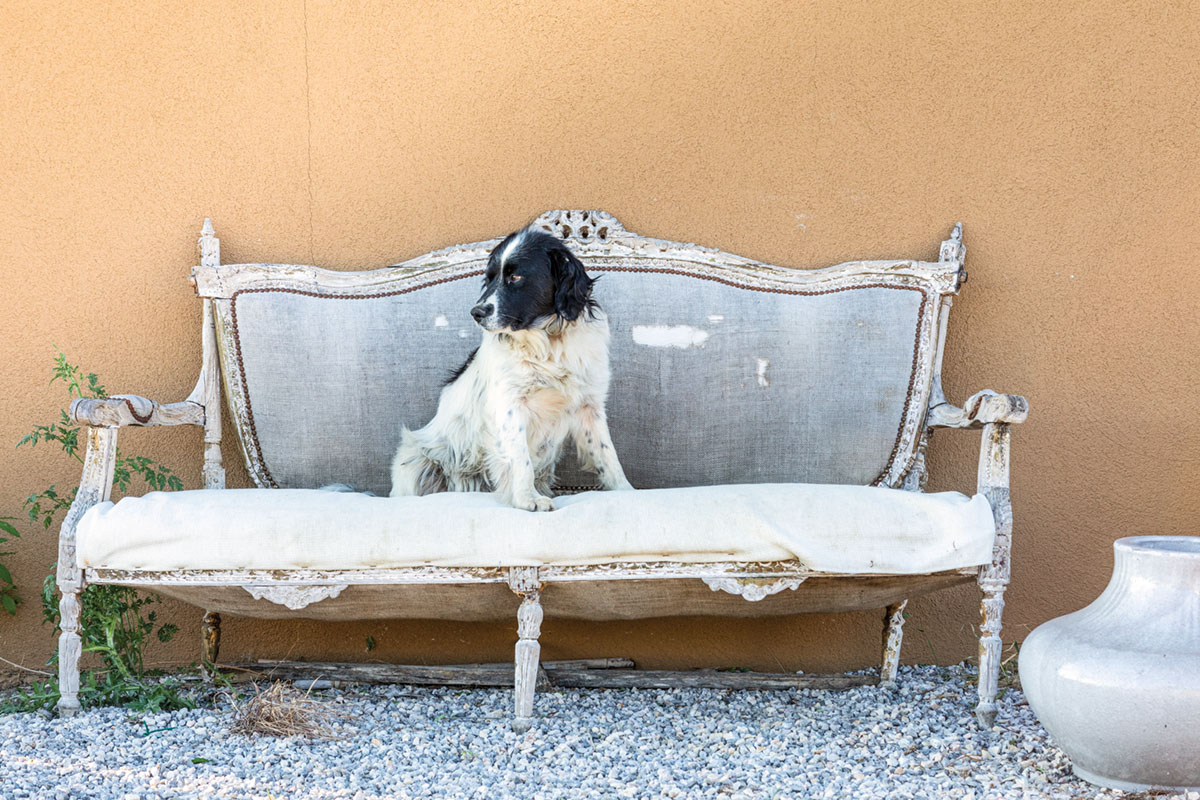
Photo by Monica Spezia | Living Inside
A family pet sits on a weathered settee.
“We love wildflowers so much, and the poppy has always fascinated us for the numerous varieties and for its natural bearing.” —Teresa and Laura Cugusi

Photo by Monica Spezia | Living Inside
Teresa with a colorful collection of blooms
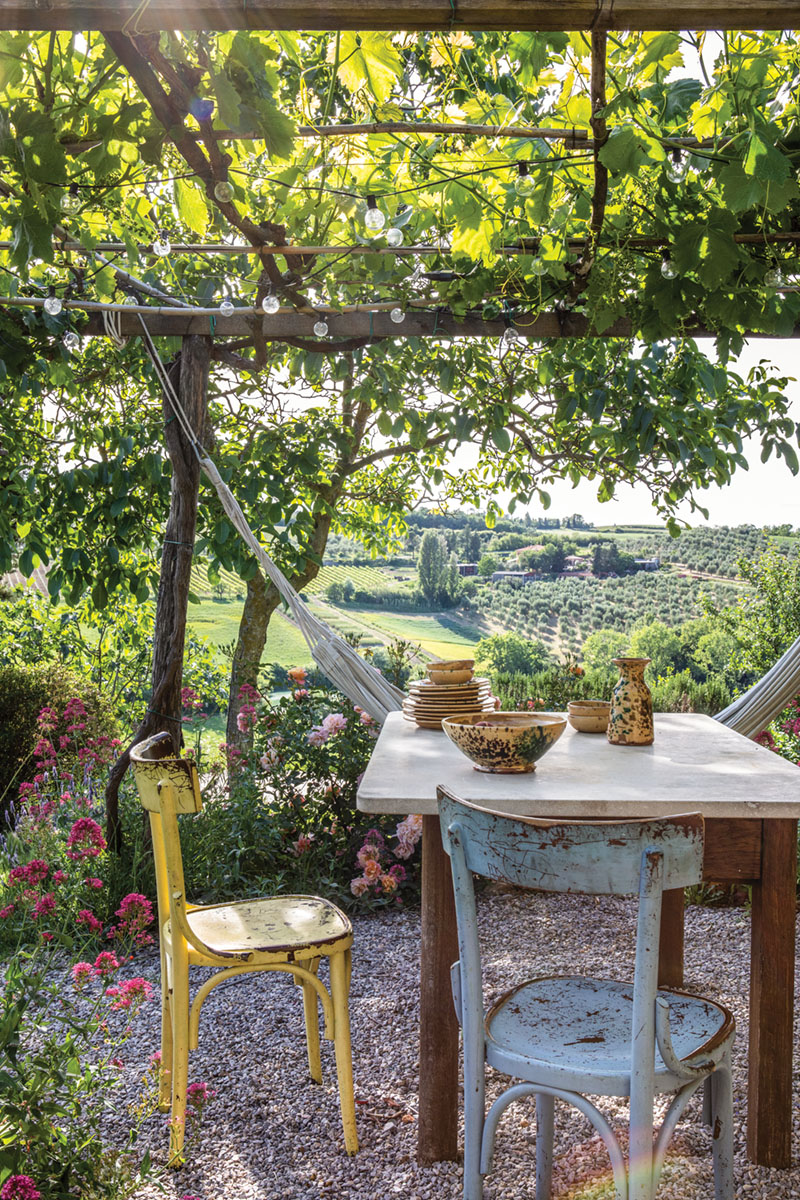
Photo by Monica Spezia | Living Inside
Under a pergola, an old table and chairs and a hammock overlook a beautiful view of the property.
It’s no surprise that Puscina is part of the SlowFlowers Italy movement (an association of florists, flower farmers, and floral designers). As with the Slow Food movement, SlowFlowers strives for a low carbon footprint and sustainability, aesthetics but also ethics. This new generation of artisan farmers brings to the table manual skills, creativity, taste, and the necessary botanical knowledge, all nourished by a great dedication and a natural bond with their land—“almost a sentimental relationship,” the sisters say.
While this method is not as well known in Italy and Europe, it is much more popular across the pond, in the United States. “It was fundamental and inspiring to know about the work of Floret, the small American flower farm that focuses on growing some of the most stunning flower varieties in the world—many of which are neglected by the mainstream market—and then sharing with the community the botanical knowledge gained over the years,” they say. “Their experience convinced us that our idea for Puscina Flowers was not just possible but also potentially successful.”
La Rosa Canina laboratory, near Florence, Italy, has also been a reference point. “Enthusiastically and generously, they taught us some of the main principles of floral design while we were making our first steps,” say Teresa and Laura.

Photo by Monica Spezia | Living Inside
Teresa and Laura dye fabrics with flower petals and colored earth to embellish their floral compositions.
The pride of the Cugusi sisters’ garden is the poppy. “We love wildflowers so much, and the poppy has always fascinated us for the numerous existing varieties and for its natural bearing,” they say. “It looks like an extremely delicate flower but actually has a great reproductive force. It’s frostproof and surprises us every year.”
The favored poppies play with delicate English roses and rare species of bulbs and tubers, a multitude of colorful tulips and dahlias, aromatic plants, and the foliage from Mediterranean scrub (a blooming landscape that attracts tourists from all over the world), resulting in bouquets that reflect the Tuscan allure of Puscina Flowers.
MORE FROM PUSCINA FLOWERS FARM
Click image to enlarge.
By Francesca Sironi | Photography by Monica Spezia/Living Inside | Floral design, Laura and Teresa Cugusi of Puscina Flowers, puscinaflowers.com, Instagram @puscinaflowers


